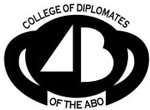TMJ Solutions
The temporomandibular joint (TMJ) is the functional connection between the upper and lower jaws and has been called the most complex joint in the body. It is similar to a ball and socket joint but between the upper jaw (socket) and lower jaw (ball) is a disk made of fibrocartilage that acts as a third bone. This is what enables all the variables in movement. The joint moves side to side, rotates and slides in and out of a socket all at the same time. Both joints have to move at the same time, but in different ways, depending on the movement that is being performed.
The TMJ can be injured like any other joint in the body. The most common problems are associated with the dislocation of the disk between the bones. The disk is maintained in it's position by ligaments. If the ligaments are injured, the disk can slip out from its position in between the two bones. When this occurs, the jaw moves into an area of blood vessels and nerves and this of course can become very painful. The sensation is like a deep ear pain.
In response to this, the muscles that move the jaw, try to limit their motion in order to minimize the pain. These include the muscles in the temple, cheek and behind the eyes. Sometimes the muscles in the neck become involved. This can lead to chronic pain and headache.
Treatment is usually successful with a combination of therapies. Intraoral orthotics (splints*) that are similar to retainers, are used to stop the dislocation of the jaw. Various physical therapy techniques and some medications may also be necessary. There are many types of orthotics and the specific combination needed depends on the problem in the jaw. On rare occasions, surgery may be necessary, but that is less than 5% of cases.
There are many problems that can affect the jaw joint including systemic ones such as rheumatoid arthritis. A proper diagnosis is essential to maximizing the therapeutic outcome.



